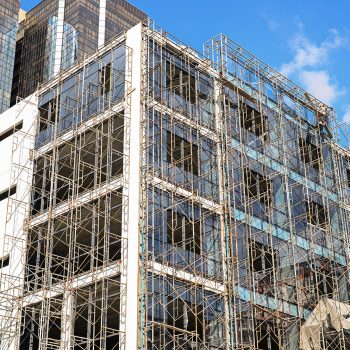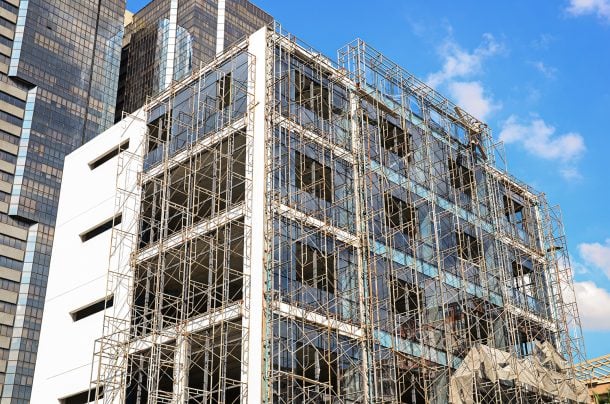India's property market and what makes it so attractive for investors?
Like most property markets across the world, India’s real estate sector is a game of two halves; but what sets it apart and makes it so attractive for investors at the moment is that the subcontinent’s property sector is being radically reanimated by an unprecedented and explosive demographic shift; a step-change that is bringing with it a new and startling dynamic, likely only to increase India’s global importance well into the foreseeable future.
Because India currently has the fastest growing population of any large economy on the planet - the United Nations reported last year that it was likely to overtake China as the world’s most populous country by 2022 (less than five years away). And that’s not all because of course projected population growth on the subcontinent is exponential so that figure is expected (by the United Nations again) to reach no less than 1.7 Billion by 2050.
The socio-economic consequences of all of this are profound enough in themselves, but such startling demographic changes have also been accompanied in India by a rapidly increasing rate of urbanization, progressively shifting the population from country to town and swelling already overcrowded conurbations such as Mumbai, creating an acute shortage of residential housing stock and also an unprecedented demand for commercial property.
So let’s take a look at the first of those factors.
The Residential Housing Sector
India has suffered from an acute shortage of (particularly affordable) residential housing for decades, but rapid population growth coupled with increasing urbanisation has driven Prime Minister Modi’s Government to include key provisions in this February’s Union Budget to do something about it.
So affordable housing has now been given Infrastructure Status meaning Developers will find it a lot easier to secure access to institutional credit for project funding and they will also find that the overall bottom line cost of borrowing has been reduced. The Budget measures also take into account that social housing projects are currently taking longer to close, so the eligibility timeline has been increased from three to five years and the definition of “affordable housing” has been revised to enable a wider range of developers to participate in the scheme.
And that’s by no means all.
Against a historic background of high inventory levels which have created a notorious fetter on investment (unsold stock being taxed as income in the developer’s P&L), the new regime will give developers up to a year to pay tax on notional rental income accruing on their completed (but unsold) residential stock; and there will be a new reduced period of two years after which capital gains can be considered eligible for long term write down. It seems inevitable these measures will increase the appetite to invest in the residential sector; they are certainly the boldest governmental initiative to be seen in the area since Independence. The recent budget measures signal a clear governmental commitment to creating financial and fiscal incentives for new residential builds, establishing a pattern of supply to meet burgeoning demand in one of the most exciting and innovative markets in the world. What more could you possibly ask for?
Well, what about the Commercial Real Estate Sector? What about REITs?
Commercial Property and the REIT Model in India
Traded Real Estate Investment Trusts (REITs for short) have of course been enormously successful in stimulating the North American Property Market for the past fifty years, creating a range of tax breaks for packaged commercial property portfolios which are then investment graded and listed for dealing in public markets; and that success was one of the reasons why the REIT Model has been adopted root and branch not only by the United Kingdom but also in some of the most developed economies around the world.
And now REITs have finally arrived in India where they are widely expected to create major new opportunities for investment in the commercial property sector. It is, in so many ways, the natural counterpart for the stimulus currently being given by the Government’s “Housing For All” Program to the residential real estate sector. So, for example, this year’s Union Budget also included a new REIT based tax regime, establishing the basis for a ‘pass through’ structure and including LLP vehicles in the definition of ‘SPV’ (Special Purpose Vehicle), both of which will make the Model much more flexible in its application; and these incentives are already showing solid results with the first of the new REIT Bonds having been successfully listed and traded on the Bombay Stock Exchange last month.
And just think about it; it’s not as though India is unleashing all this potential from a cold start. Knight Frank India reported in March this year that the subcontinent already has an inventory of rent-yielding office stock valued at more than USD 70 Billion (something in the order of 537 Million square feet of space); Donald Trump, no less, described the sector as “wonderful” (a word we are getting used to from him but given the worldwide status of the Trump Organization in commercial property developments, one is inclined to say that he should know what he’s talking about (on that subject at least)). So there is an enormous pipeline of potentially REITable assets in India and it bodes extremely well for the future of the sector.
In overall market terms as well, the five-year return statistics for REITs last year ranged between seven and sixteen percent globally, and with relative newcomers to the model in Japan and Malaysia already securing eight to ten per cent, most market analysts have very high expectations for Asian Markets generally going forward; and for India in particular.
Red Ribbon Asset Management is committed to investing in socially responsible real estate projects in India since it was founded more than a decade ago. Red Ribbon Asset Management aims to generate above market rate returns for investors, by investing in projects having a positive impact on society and the environment, including the innovative Modulex project, which is on target to become India’s foremost offsite modular construction company with the capacity to manufacture buildings ranging from hospitals to residential homes and everything in between.








Leave a Reply